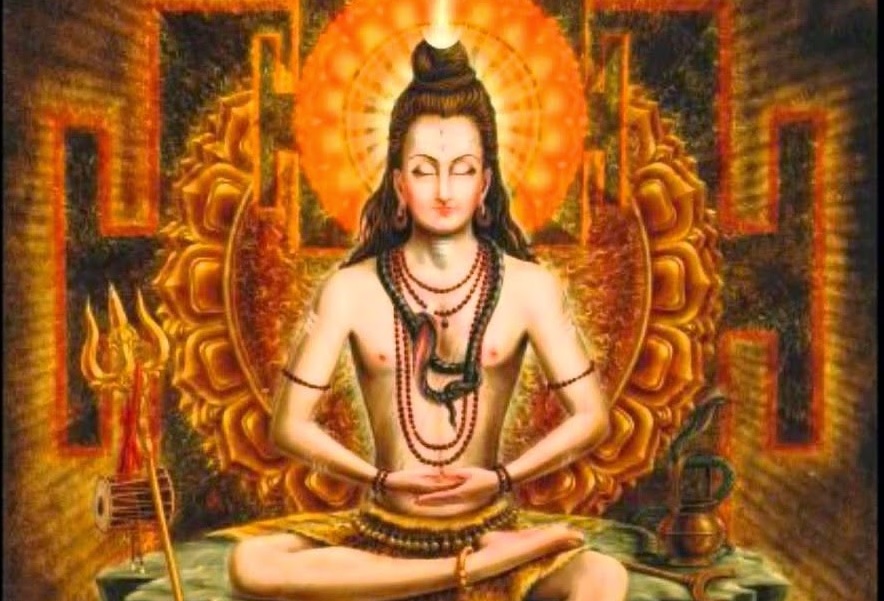No products in the cart.
To control the activities or goings on in the mind is Yoga. The Ashtanga or Eight-Limbed Yoga comprises of Yama- Niyama- Aasana- Pranaayama- Pratyahara-Dharana-Dhyana-Samadhi. Yama is denoted by good behaviour comprising Ahimsa (Non-Violence), Satya (Truth), Asteya (stealing), Brahmacharya (avoidance of sex) and Aparigraha or Excessive acquisition. Basic Niyamas is in fact an extension of Yama: To refrain from hurting or torturing co-Beings physically or mentally is Ahimsa; to convey whatever is seen, heard, and believed is Satya unless it does not hurt any body is known as Satya; to desist stealing of other’s property by deed, thought or otherwise is called Asteya; to negate from relationship with another female or in respect of a female wih another male, excepting the wedded woman or man as the case may be and this should be observed by vision, thought or deed is called Brahmacharya or celibacy; and to abstain from excessive acquisition of materials far and above one’s needs in the short run of time is stated to be Aparigraha. Besides the above General Principles, Niyamas also involve the specific deeds viz. Shoucha or Physical Cleanliness,Yagna-Tapa or meditation, Daana or charity, Swadhyaya or Memorising or Reciting the Scriptures, Indriya Nigraha or Control of Physical Limbs, Vratas like Chandrayana as also or to perform formal worship directed to specific Devatas and purposes,, Upavaasa or Fasting, Snaana or Formal Bathing besides Tirtha Seva and ‘Aniccha’or General Disinterestedness and abstinence; these are the Ten Niyamas. The next component of the Ashtanga Yoga denotes as Aasana which not only includes the right posture of formal seating like of Padmasana followed by ‘Bahyatantara Shuchi’ or external and internal cleanliness, Shiva Puja starting from Brahmanas, Agni, Varuna with other Devas climaxing with Parama Shiva. Included in the Aaasana are Japa, Swadhyaya, and Tapas etc; Japa should be of Panchakshari viz. Om Namassivaya Mantra and Swadhyaya is of Omkara and of Vedas and other Scriptures. Japa and Swadhyaaya are of three kinds: Vaachaka, Maanasika and Upaamsaka (Oral, mind-borne and Upaamshak or as guided by Guru). The next step is Pranayama or to practise interruptions of Prana or life-air or merely stated as the breathing processes of ‘Manda’ or mild, ‘Madhyama’ or medium and ‘Uttamaa’ or the best of variations; these interruptions comprise twelve units each of ‘Uchhvaasa’ or inhaling and ‘Nishvasa’ or exaling in the mild category, while these two holdings of breath would be for twenty four units in either case in respect of medium category and thirty units in either case in the best category. ‘Yogaabhyaas’ or the practice of Yoga besides providing happiness and peace of mind would cure several physical weaknesses to rectify respiratory and digestive imbalances, bring about shine of body and mind, cleanse up blood and its circulation and sharpness of thinking. Yoga unifies and balances of the ten kinds of ‘Vaayus’ or Airs in the human system viz. Praana-Apaana-Samaana- Udaana-Vyaana-Naaga-Kurma-Kukara-Devadutta and Dhananjaya. The air that enables vital functions of the human body, respiration and general activity is Praana; the air that is generated by the food intake down in the digestive process is Apana; the air that controls the involuntary movements of the body, circulation of blood,and flow of sweat from glands to skin and creating diseases is Vyaana; the air that controls the bubbling in the ‘marmaavaya’or the secret part is Udaana; the Equalising air balancing the body parts and stimulating digestive fluid is called Samaana; Udgaar (dakaar) is the wind called Naga; the wind enabling ‘Unmeelana’ or of the opening of eyes is Kurma; Kakara Vayu creates hunger, Devadatta created yawning and Dhananjaya Vayu creates high-pitch sounds and also remains with the body for a while even after death. Thus four kinds of Siddhis viz. Shanti, Prashanti, Deepti and Prasada are achieved by the Yoga. Pranaayama also achieves the generation of Tatwas viz. Vivaswara, Mahaan, Mana, Brahma, Smriti, Khyati, Ishwar, Mati and Buddhi. Pratyahara demolishes sins; Dharana facilitates the holding up of the crucial state of balance; Dhyana or meditation of Ishwara bestows the devastation of poisons like Vishayas or worldly matters; Samadhi leads to Prajna or Self-Consciousness. Thus Yoga aided by ‘Asana’ leads to the dynamic circle of Praanayama-Pratyahara-Dharana-Dhyana culminating in Samadhi.
The above was the outline of Yogaabhyaasa and now to the practice of it: one should not practise Yoga in the surroundings of Fire, water, dried leaves, animals, burial places, of great sound or disturbances, worm-infested places, uncongenial and inauspicious places, places occupied by evil-minded persons and so on; but in quiet caves, Shiva Kshetras, lonely forests or gardens without distractions. Yogaabhyaas should be intiated by greeting one’s Guru and then to Shiva, Devi, Ganesha and others and by resorting to Padma or any other Aaasana ; he should fix his eyes at a particular Target, expand his chest, raise his head, not touch his teeth of one line with another, keep looking at the tip of his nose and not look at sides; and by aligning his Three Gunas, concentrate on Parama Shiva in Dhyana on Omkara, dipa sikha or top of an oil-lamp. The Yogi must visualize a white lotus encased in a Trikona or a Triangle and set in the images of Agni, Soma and Surya and then perform meditation of Rudra on the forehead by picturising Shiva in two, or four, or six, or ten or twelve or sixteen leaves; the dhyana should be targetted to the golden and fire-like, twelve Aditya-samaana, lustrous Nilalohita Shiva. Maheswara should be retained in the hridaya or heart, Sadashiva in the naabhi or navel, and Chandrachuda in the ‘Llalaata’ or forehead and the prayer should be as follows:
Nirmalam Nishkalam Brahmaa Sushantim Jnaana Rupinam,
Alakshanamanirdeshya Manoralpataram Shubham/
Niraalambamatarkai cha Vinashotpatti varjitam,
Kaivalyam chaiva Nirvaanam Nishreyasamanuttamam
Amritamchaaksharam Brahmam hyapunar –bhavamadbhutam/
Mahaanandam Paramaanandam Yogaanandamanaamaam,
Heyopaadeyarahitam Shukshaatsukmataram Shivam/
Swayam Vedyamavedyam taacchivam Janamayam Param/
Ateendriyamanaabhaasam Parama tatwa Paratparam,
Sarvopaadhi Nirmuktam Jnaanagamyam Vicharatah/
Adwayam Tamasaschaiva parastaat samsthitam param
(Nirmala, Nishkala, Brahma, Shanta, Jnaanarupa, Lakshana Rahita, Shubha, Niralamba, Atarkya or Unquestionable, Naashotpatti rahita or who is bereft of birth and termination, Kaivalya, Nirvana, Nishreya or devoid of hold , Amrita, Akshara, Moksha, Adbhuta, Mahananda, Paramaananda, Yogaananda, Heyopaaya rahita, Sukshmaati Sukshma, Parama Jnaana Swarupa, Ateendriya, Anaabhaasa, Paratpara, Sarvopaadhi nirmukta, Jnaanayogya, Unique as he has no duality).Thus Ishwara be prayed in the Naabhi Sthaana, in the middle of the Body Shiva of Shuddha Jnaana be concentrated and in the Uttama Marga by the means of Puraka-Rechaka-Kumbhaka or Inhalation-Exhalation and Retention of breathing respectively called Pranayama.
A practitioner of Yoga is invariably faced with several kinds of difficulties like Alasya, Vyadhi Peeda, Pramaada, Samshaya chitta or Chanchalata, Ashraddha in the path of Darshana, Bhranti, Duhkha durmanastatha and Arogya Vishaya. Alasya is due to the heavy weight of Body and the resultant lack of preparedness. Vyaadhi peeda is caused by dhatu- vishamata or ill-health and disability. Pramada is due to fear of Abhyasa or Practice; Samshaya or a feeling of apprehension and negativity of approach; Ashraddha or sheer carelessness and laziness; Bhranti is due to a feeling of Yoga’s ineffectiveness; Duhkha durmanstha or misplaced fatalism that human beings are any way subject to ‘Tapatrayaas’ (or of Adhi bhoutika, Adytatmika and Adhi daivika reasons or due to body-mind or God made calamities) and a general mind-set of yoga or no yoga human beings are any way subject to the ups and downs of life! Arogya Vishaya is yet another limitation to Yoga Practice due to a general belief of retaining health from other ways and means of medicines.
A successful Yoga Practitioner is endowed with ‘Dasha Siddhis’viz. Pratibha, Shravana, Vaarta, Darshana, Aaswaada and Vedana. Jnaana Pratibha is the Siddhi of knowing about a Vastu or Vyavahar or of a thing of past, present or of future; this Siddhi would infuence or impress others. Shravana Siddhi enables a Yogi to hear or understand any kind of sound or conversation or a happening irrespective of distance or time. Vaartaa Siddhi facilitates the experience of Pancha Tanmatraas of sabda-sparsha-rupa-rasa and gandhas. Darshana Siddhi is the ability to perceive or vision of any thing irrespective of time and distance limitations. Aaswaada Siddhi enables tasting any substance and Vedana Siddhi is the power of sparsha to experience the shape, form or a feature of a person or thing.
In fact a Maha Yogi is stated to possess sixty four kinds of Paisachika, Parthiva, Raakshasa, Yaaksha, Gaandharva, Aindra, Vyomatmika, Praajaapatya, Brahmaadi Siddhis but he should discard all such powers in the quest of Shivatwa. Such Siddhis range from assuming any type of Swarupa of fatness, slimnes, childhood, youth, old age, man, woman, any specie of a bird-animal-reptile, mountain, water body and so on; ability to lift mountains, drink up an ocean, flying on sky, passing through a needle’s eye and endless such miracles. [The normal Siddhis are Anima (miniaturising), Mahima ( Maximising), Prakamya (Visioning and Hearing), Isatwa (Rulership), Vasitwa (Self Control), Kama Vasitwa (ability to fulfill desires), Doora Shravana and Doora Darshana or distant vision and hearing, Parakaya Pravesha or ability to enter other’s bodies; ‘Devaanaam Saha kreedanam’ or playing with Devas, Yatha Sankalpa Samsiddhi or instant fulfillment of desires,Triloka Jnaana or knowledge of the happenings of Three Lokas; Control of heat and cold, Paraajaya or invincibility and so on.] Depending on the intensity of the success of the Yoga practice and the powers attained by way of controlling the Jnanendriyas and Tatwas, a Yogi could perform impossibilities but frittering the Siddhis so gained would negate the capacity to accomplish Shivatwa.
Disclaimer : Compiled, Composed and Interpreted by V.D.N.Rao and first appeared on Kamakoti.org







